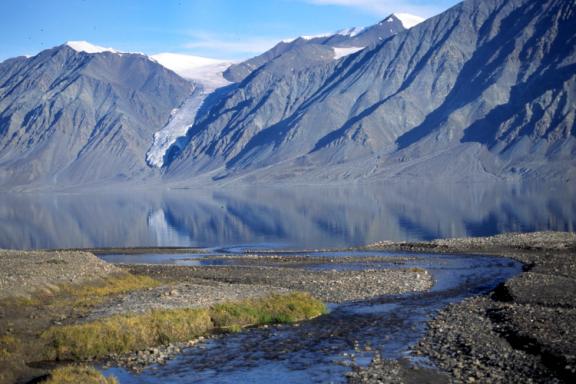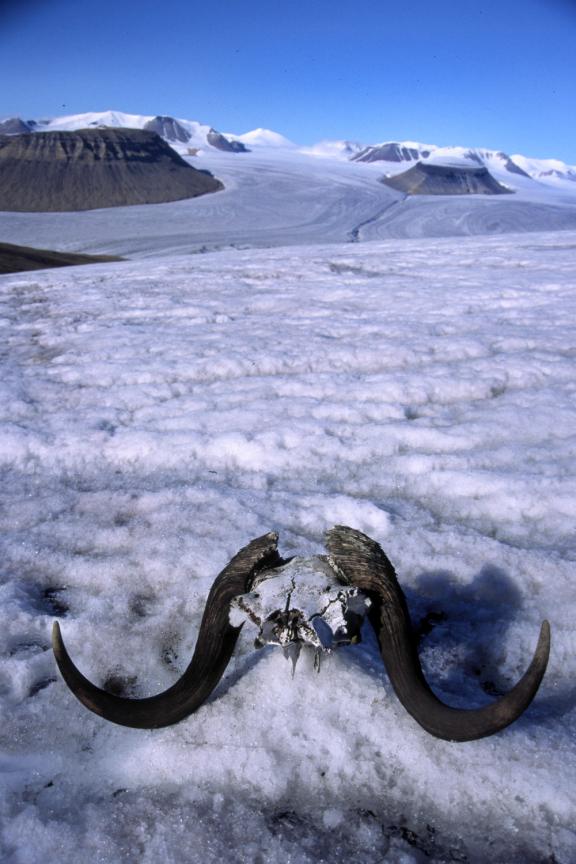Glaciers and more Glaciers
Let me state right up front, I love winter, I love snow, I love cold temperatures in all shapes and size whether delivered in an icy blast or a gentle kiss on my eyelashes. It was great to see glaciers each and every day. No matter how tired or wet or discouraged, their captivating presence lifted my blackest of moods. Their sheer size boggled the mind and I could lose myself examining their scarred surfaces.
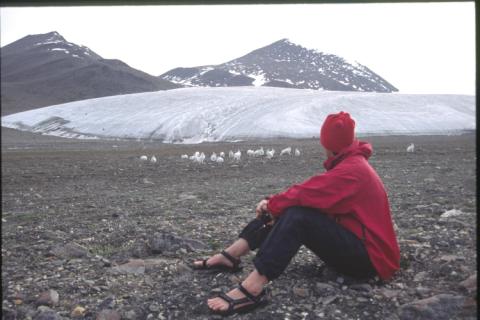
Here are some of my favourites…
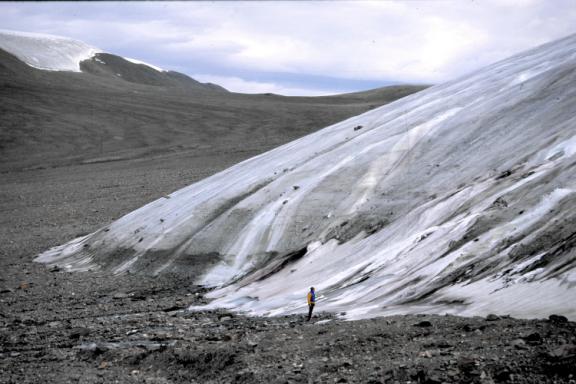
My first close inspection of a glacier: the foot of the
Roundel Glacier, camp site on Day 3. It was a long slog up the Abbe River
valley over wet hummocky ground, a gradual climb of some 1500’ elevation gain.
A grey overcast day, this lobe reaches the floor of Glacier Pass (link between
Abbe and Snow Goose River valleys). In the background is the Blister Ice Cap. 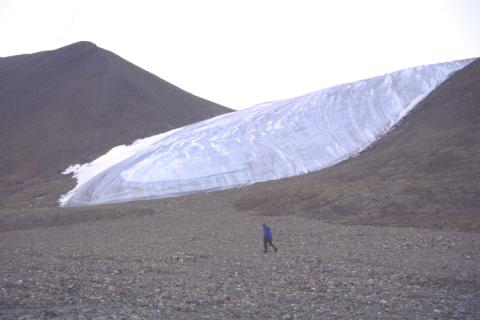
Behind Ron is an unnamed glacier lobe from the massive Henrietta Nesmith Glacier. Underfoot, the ground is a mix of rock rubble, gravel and dirt with pockets of lichen, sedges, dry mosses and tiny flowers. Winter’s snow is nestled against the glaciers flank. The simple lines and bold contours of the landscape contrasted sharply with busy fragmented details .
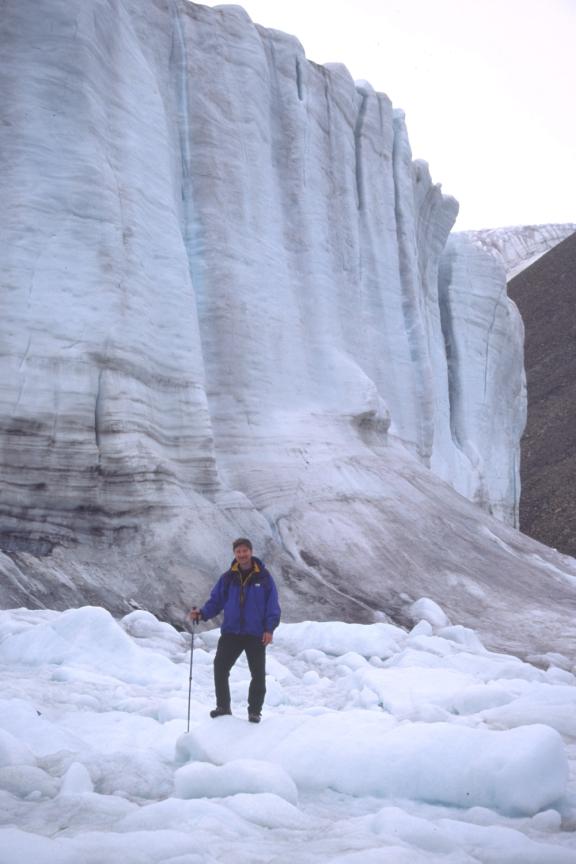
Deep in the Nesmith Valley, we stop to poke at this sheer wall of ice with the hiking poles. How often pieces of the wall calved off? it looked solidly frozen - we neither saw nor heard evidence of break away. The surrounding wet ground was a perfect breeding ground for mosquitos.
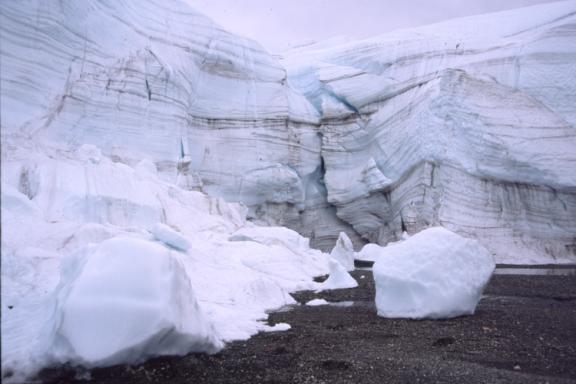
Obviously however huge lumps do peel off. Taken at the base of the Henrietta Nesmith Glacier. I estimate that the toe is between 70 and 100’ high where we cross at the base. Regardless of safety or that the water levels are rising as the daily run off builds, I can’t help but linger, fascinated by the size.
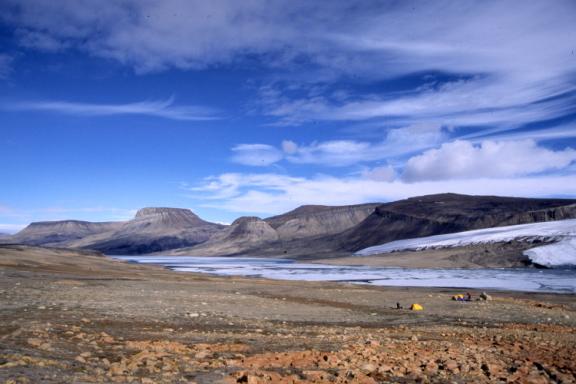
Absolutely stunning campsite views of the Charybdis glacier. The wind was blowing but the sun shone strongly through the thin clouds. We were all still slightly giddy as adrenaline still pounded through our veins after the hair raising decent off the Scylla Glacier. In the foreground is Ekblaw Lake. Finding a tiny level tent pad by a big huge erratic boulder, we set up camp and day hiked back into Rollrock Valley.
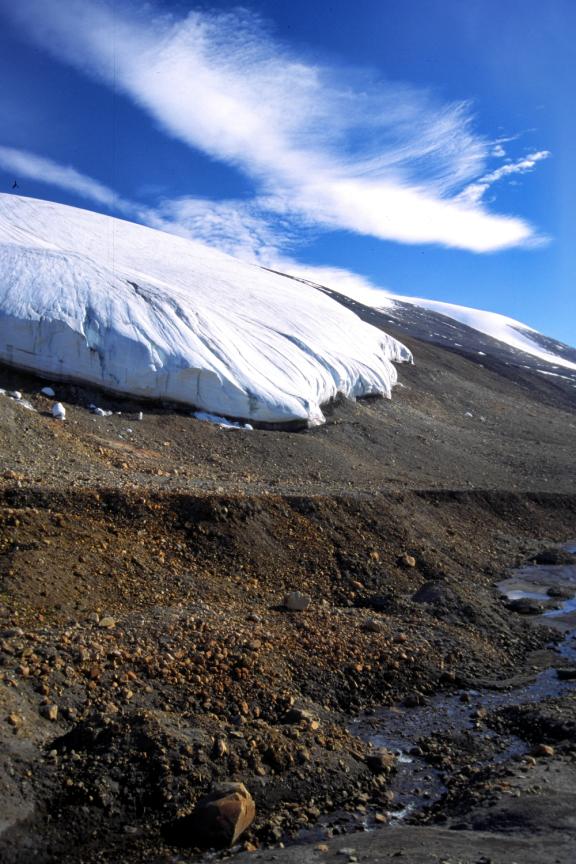
A lobe from the Viking Ice Cap that descends into Rollrock Valley. Not sure why the strong horizontal line but I speculated water related – perhaps an old lake level that had now drained away. Walking in this deep gravel filled ditch, hemmed in by blue sky, massive glaciers creeping down slopes that I can’t see the top of, made me feel very small.
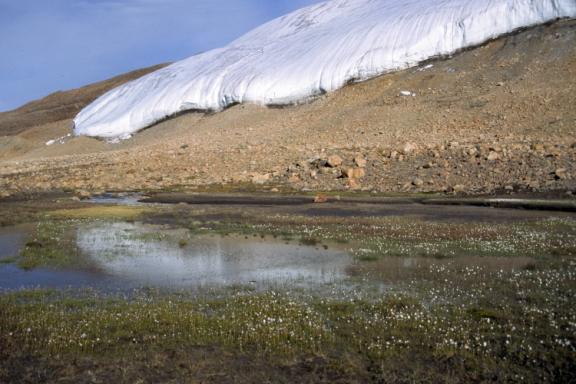
Viking glacier lobe reaching down into Rollrock Valley. I loved how the ice seemed to ‘pillow’ at the toe, like melted marshmallow which belies its frozen nature. Fat fluffy white cotton grass lines the boggy edge of melt water pond.
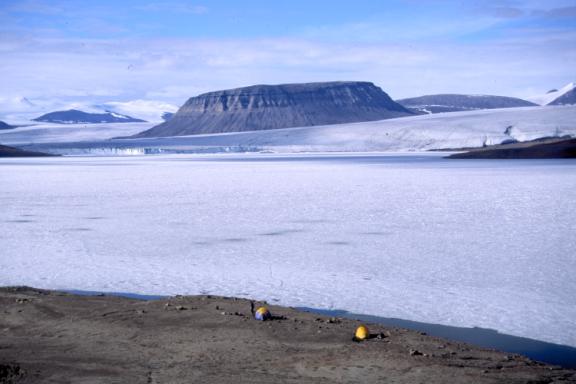
At the end of another amazing day (weather, scenery and feet all cooperating), tents were set up beside Ekblaw Lake. I dipped my water bottle into the thin unfrozen ribbon of water, sampling the pure thousand year old melt water. In the distance, flat topped ‘nunataks’ (with elevations between 3500’ to 3700’) poke out between the glacier flows. Somewhere in the distance was Barbeau Peak at 2616 meters (8583 feet), the highest peak east of the Rockies in North America.
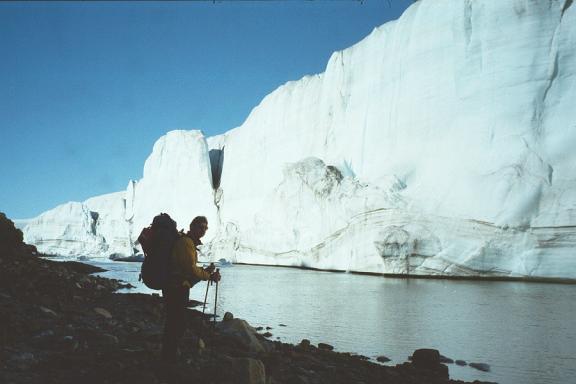
Another breath taking and harrowing day. This imposing lobe of the Air Force glacier rests on the western edge of Ekblaw Lake. Our route sneaks by on the exposed shore which gets steeper and darker in sharp contrast to the brilliance of the glacier lobe. Eerily quiet and wind calm, my senses are tingling. The occasional small rock rolls down the slope, disturbing the surreal quiet.
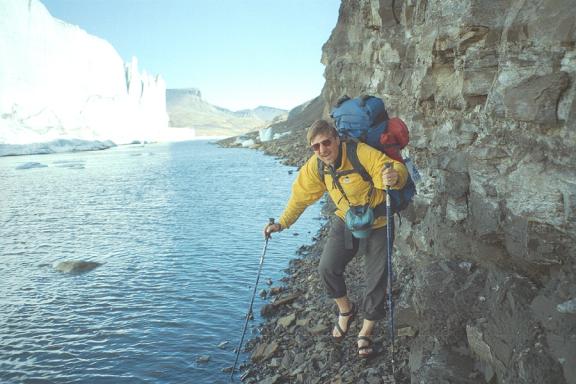
Eventually the cliffs become sheer. Instead of turning back and climbing up and over, we don water sandals and wade 50m through the frigid water around a blind curve – luckily a narrow strip of shore emerges again. Blocks of ice have been washed up on our side of the passageway – I wonder what kind of wave would have occurred if a section of the glacier wall broke off? Would it have been a glacial tsunami? With relief, sunshine warms me to the core, having successfully threaded this glacial needle.
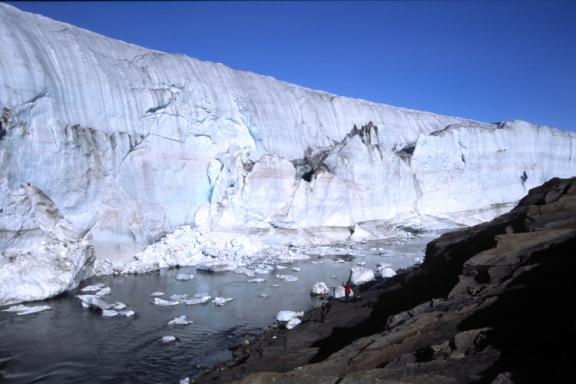
It’s an exciting day…the recommended route climbs up a short valley and over a lobe of the Ad Astra ice cap, circumnavigating a small lake. I find a hunk of petrified wood washed out on to the glacial plain. Faced with a similar choice of going up or scaling the steep sides and accompanying side stream, we opt to climb up. After 2 hrs and an elevation gain of 1500’, we find a place to get off the glacier and set up camp. The view across of the Air Force Glacier is glorious, the air crystal clear and still. Is that the north pole I see?
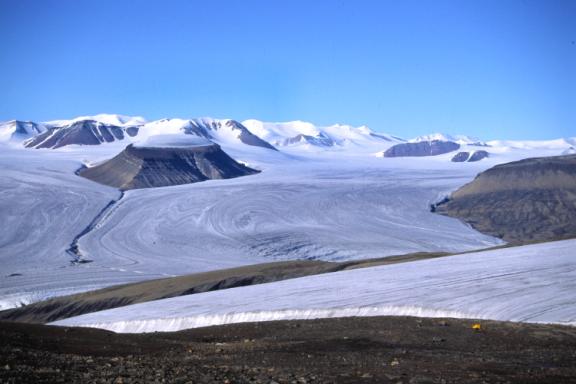
A panorama view of the unnamed Viking Ice lobe we climbed up. Our descent location was on the right side of the photo, where the glacier flattened and we could easily slide down to the ground. The yellow tent dots are not visible due to fuzzy photo and small image size. Despite the long climb and feeling slightly sick from the suns rays reflecting off the glacier, I had to wander around in the evening, my brain churning to process the days events.
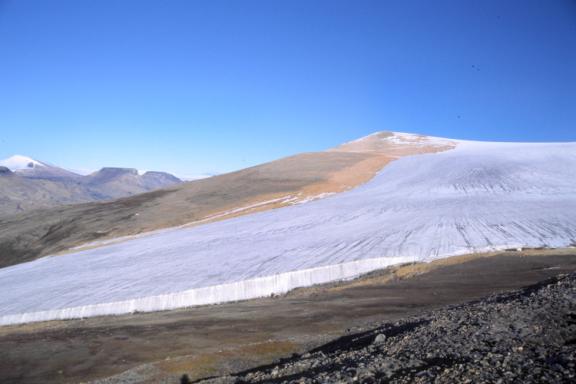
A view of two ice lobes from the Ad Astra Ice camp out of the tent on our 2nd last campsite…in the Air Force River valley close to the start of the Air Force River. It is about midnight and bright as noon time. I’m flaked out and writing in my journal – the door is open, there are no bugs. The trip is coming to its conclusion and I don’t want to sleep, wanting it to last and last and savour every remaining second here. Eventually, I put the sweater over my head to block the light, exhaustion over taking me.
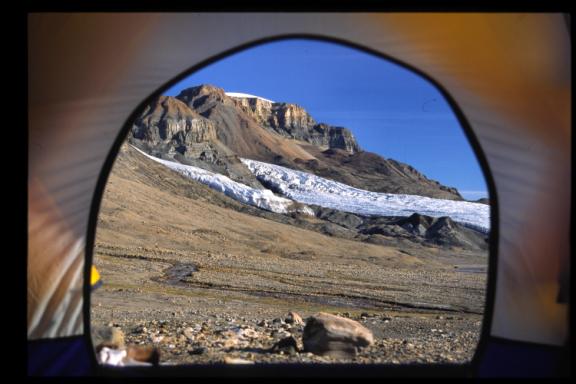
Across the water, the photogenic Gull Glacier reaches down to almost to waters edge. At 3am, the daylight has made the tent hot and with no breeze this night, I scramble out to wander around Tanquary Fiord base camp. Today we are to leave Ellesmere Island.
Everyone else is sleeping from the Parks personnel to the animals. I feel like the only living thing for miles and revel in the calm, the quiet, the feeling of this perfect moment.
It’s a monumental ending to an amazing trip at the top of the world.
